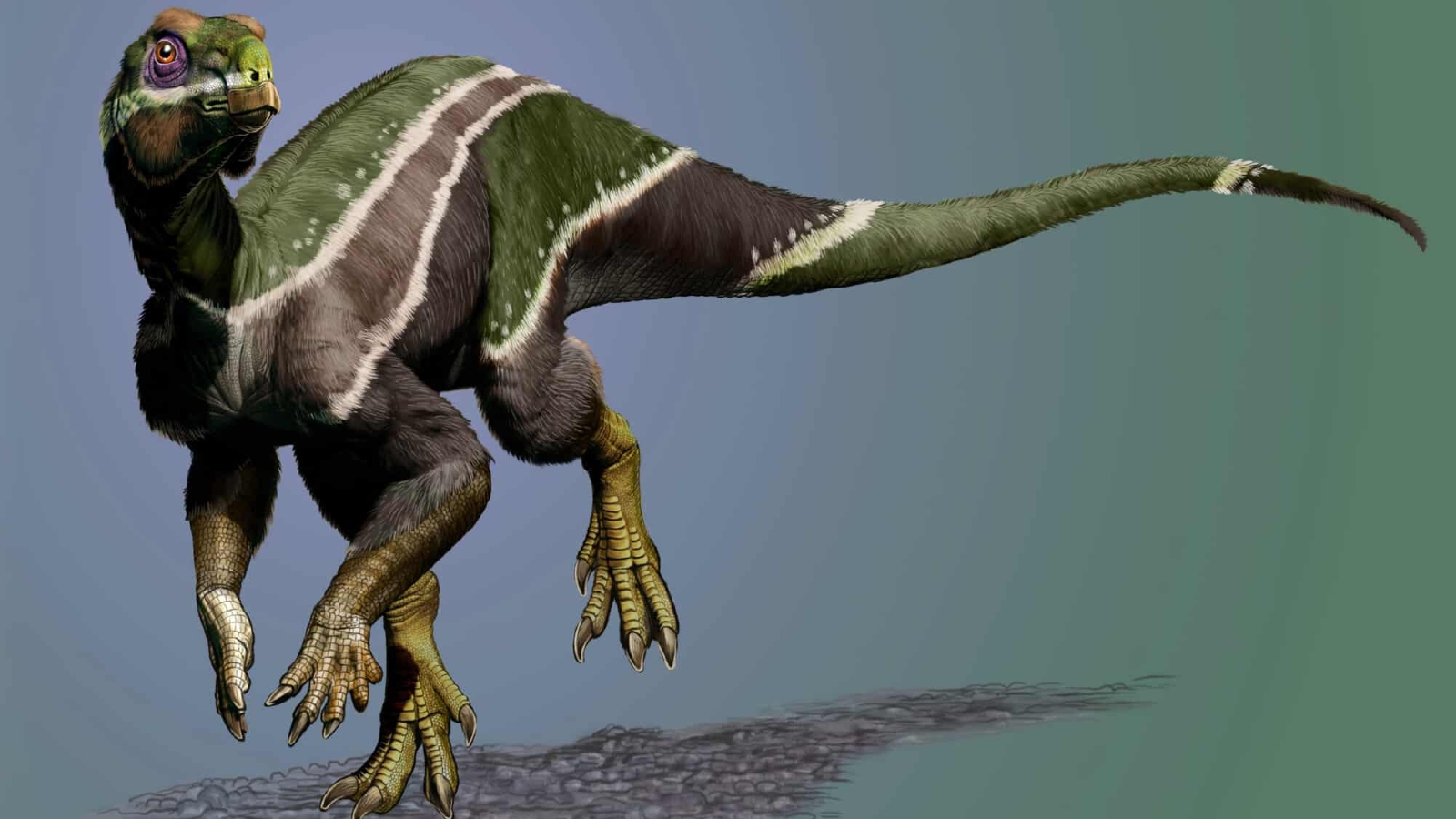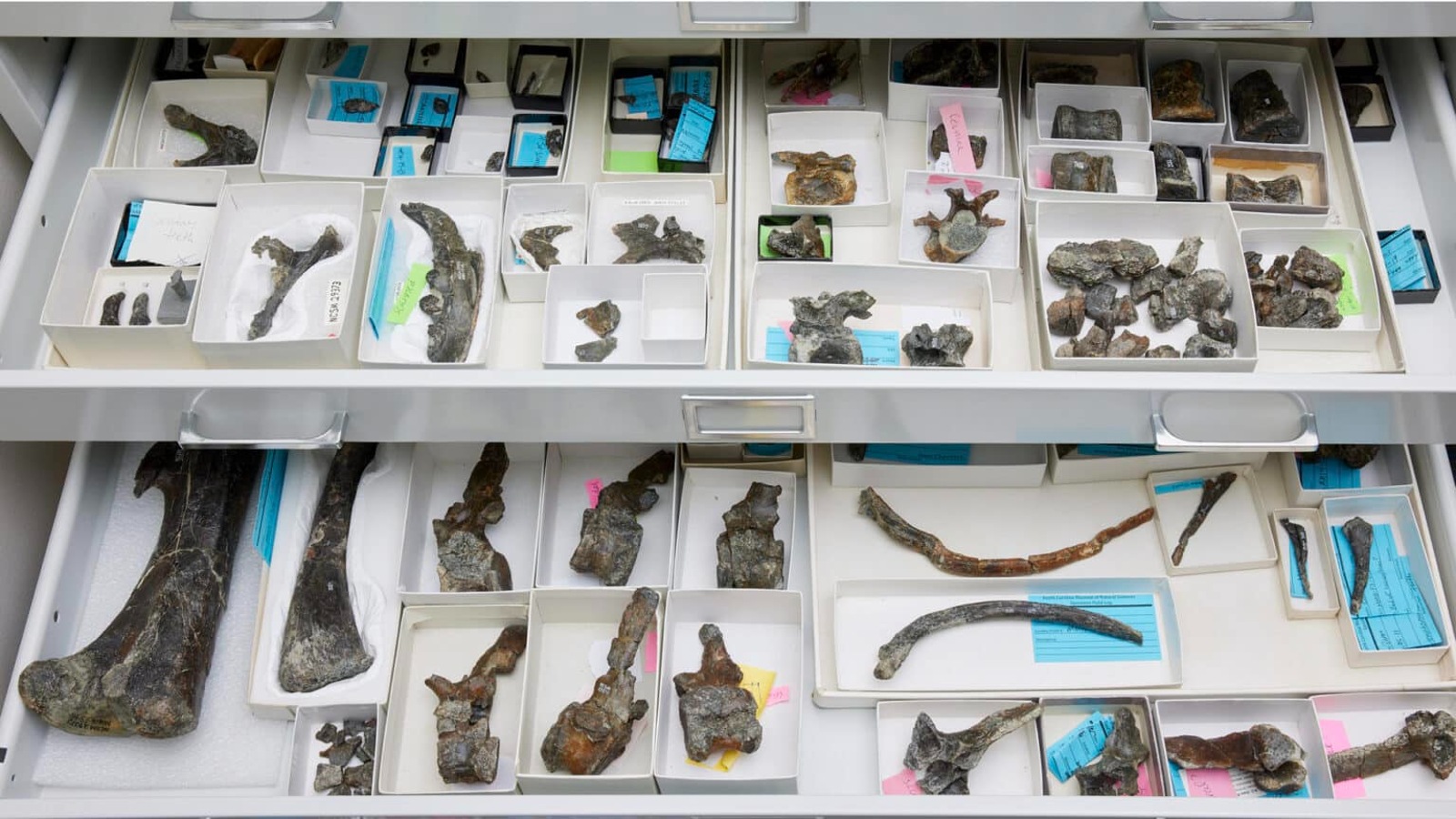Dinosaur named after 2-faced Roman god could be 'missing link' in duck-billed dinos' evolution
The plant-eating, raptor-like dinosaur lived during a time of great transition around 99 million years ago and was named after the Roman god Janus.

Paleontologists have unearthed a never-before-seen raptor-like dinosaur that lived during a period of extreme climate change around 100 million years ago. Researchers think the newfound species, named after the two-faced Roman god Janus, could be an evolutionary "missing link" between two key dinosaur groups.
The newly described species, Iani smithi, belongs to the clade Ornithopoda — an extinct group of nonavian, mostly bipedal dinosaurs with several birdlike features. It is unclear exactly how large this species was, but it likely grew to around 10 feet (3 meters) long. One of the standout features of I. smithi is its powerful jaw, which hints that the species exclusively ate plants.
Researchers unearthed a partial skeleton of a suspected I. smithi juvenile in Utah's Cedar Mountain Formation in 2014. The bones — which include a nearly complete skull, several vertebrae and limb bone fragments — date to around 99 million years ago, during the mid-Cretaceous period.
Related: 'Extremely rare' fossilized dinosaur voice box suggests they sounded birdlike
"Finding Iani was a streak of luck," study lead author Lindsay Zanno, a paleontologist at North Carolina State University, said in a statement. "We knew something like it lived in this ecosystem because isolated teeth had been collected here and there, but we weren't expecting to stumble upon such a beautiful skeleton."
The team described I. smithi in a new study published June 7 in the journal PLOS One.
The newly described genus Iani, of which I. smithi is the sole species, was named after Janus, the Roman god of change, who is often depicted with two faces. Researchers chose this name because I. smithi existed during a period of extreme climate change, which drastically altered the trajectory of dinosaur evolution.
Sign up for the Live Science daily newsletter now
Get the world’s most fascinating discoveries delivered straight to your inbox.

During the mid-Cretaceous period, Earth faced extreme climate change driven by naturally increasing carbon dioxide levels that caused global temperatures to soar and sea levels to rise. As a result, many large herbivores — such as the early ornithopods and gigantic, long-necked sauropods — and their predators died out. In their place, multiple lineages of smaller plant-eating dinosaurs emerged, as did a new generation of predators, including therapods such as Tyrannosaurus rex, the researchers wrote in the statement.
The team suspects that I. smithi may have been a "last gasp" ornithopod species that managed to adapt quickly enough to the changing ecosystems to survive where a majority of its relatives did not.

"This dinosaur stood on the precipice — able to look back at the way North American ecosystems were in the past, but close enough to see the future coming like a bullet train," Zanno said.
The team thinks I. smithi could be the missing link between early ornithopods and the genus Parasaurolophus. This group of duck-billed ornithopods with large head crests was one of the most successful herbivorous groups in the period following the climatic shift in the mid-Cretaceous.
"Iani may be the last surviving member of a lineage of dinosaurs that once thrived here in North America but were eventually supplanted by duckbill dinosaurs," Zanno said.

Harry is a U.K.-based senior staff writer at Live Science. He studied marine biology at the University of Exeter before training to become a journalist. He covers a wide range of topics including space exploration, planetary science, space weather, climate change, animal behavior and paleontology. His recent work on the solar maximum won "best space submission" at the 2024 Aerospace Media Awards and was shortlisted in the "top scoop" category at the NCTJ Awards for Excellence in 2023. He also writes Live Science's weekly Earth from space series.










